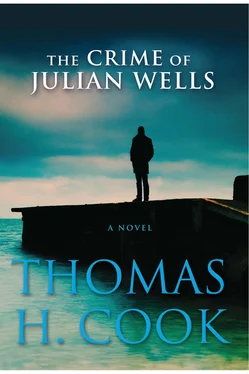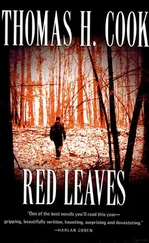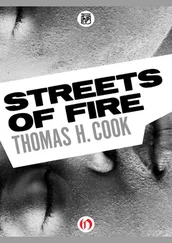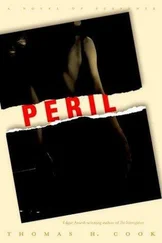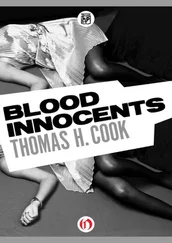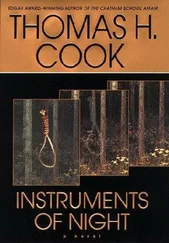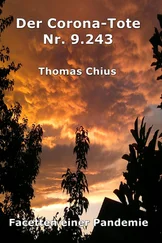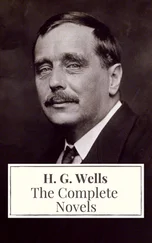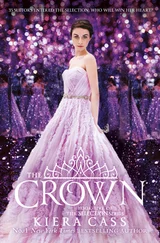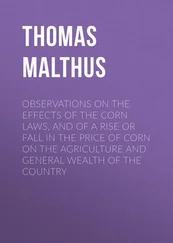Thomas Cook - The Crime of Julian Wells
Здесь есть возможность читать онлайн «Thomas Cook - The Crime of Julian Wells» весь текст электронной книги совершенно бесплатно (целиком полную версию без сокращений). В некоторых случаях можно слушать аудио, скачать через торрент в формате fb2 и присутствует краткое содержание. Год выпуска: 2012, ISBN: 2012, Издательство: Grove Press, Жанр: Криминальный детектив, на английском языке. Описание произведения, (предисловие) а так же отзывы посетителей доступны на портале библиотеки ЛибКат.
- Название:The Crime of Julian Wells
- Автор:
- Издательство:Grove Press
- Жанр:
- Год:2012
- ISBN:9780802194589
- Рейтинг книги:5 / 5. Голосов: 1
-
Избранное:Добавить в избранное
- Отзывы:
-
Ваша оценка:
- 100
- 1
- 2
- 3
- 4
- 5
The Crime of Julian Wells: краткое содержание, описание и аннотация
Предлагаем к чтению аннотацию, описание, краткое содержание или предисловие (зависит от того, что написал сам автор книги «The Crime of Julian Wells»). Если вы не нашли необходимую информацию о книге — напишите в комментариях, мы постараемся отыскать её.
The Crime of Julian Wells — читать онлайн бесплатно полную книгу (весь текст) целиком
Ниже представлен текст книги, разбитый по страницам. Система сохранения места последней прочитанной страницы, позволяет с удобством читать онлайн бесплатно книгу «The Crime of Julian Wells», без необходимости каждый раз заново искать на чём Вы остановились. Поставьте закладку, и сможете в любой момент перейти на страницу, на которой закончили чтение.
Интервал:
Закладка:
We arrived at Julian’s apartment an hour later. Rene had arranged for the owner of the building to leave the key with an old woman who lived on the first floor. She was North African, and I could see that Rene immediately regarded her with suspicion, as if he were still in Algiers, where every woman carried a bomb in her basket.
“Okay, we can go up now,” he said as he ushered me toward the stairs. “But be careful. As we say, ‘Napoleon pissed here.’ You cannot trust the wood.”
Despite my earlier reservations, I now felt a curious anticipation as I mounted the stairs, a sense that I was coming nearer to Julian. For it was to this one space on earth that, after all his many and extended travels, he had always been drawn back.
So why, I asked myself, as I stepped inside it, did it feel so lost and cheerless, so devoid of the homey quality one associates with decades of living in a space? In this room I’d expected to glimpse at least some small aspect of the devotion I thought Julian must have had for his work. Instead, I saw only evidence of his loneliness and isolation. There were no pictures to brighten the room’s dim light, nor even so much as a calendar by which he might have recorded an upcoming rendezvous. There was no radio or television. Evidently, he did not listen to music either while he worked or to relax when his work was done.
What I found was a garret five floors above a dismal street. It had small windows kept tightly shuttered for so long that I had trouble prying them open. When I did, the light revealed the full austerity of the room, the iron bed, the small wooden desk, no element of which was in the least unexpected. Julian had lived like a monk, and on that thought I remembered the day we visited Mont Saint-Michel. We had climbed the stairs to its uppermost tower, where the monks had once sat exposed to the frigid winds of the Normandy coast. In that icy, windswept scriptorium, they’d spent their lives copying manuscripts, using small metal rods to break the ice-encrusted ink, and in this one, almost as uncomfortable and psychologically no less isolated, Julian, the secular anchorite, had written his dark books.
The materials he used in his research filled the bookshelves that covered almost every wall. There were probably around five hundred books, most of them about the eras during which the crimes he studied had taken place. There were books on Spain when the crime of Cuenca had occurred, and on the rest of Europe, particularly Germany and France, at the time of Oradour. Several shelves were devoted to his study of La Meffraye, and he had grouped a number of biographies of Elizabeth Bathory together, along with general histories of Hungary at the time of her crimes, though there were far fewer research materials having to do with her case. One bookcase held works that dealt with Andrei Chikatilo, interspersed with books on Russia during the time of the killer’s life span, the dark age of Stalinism.
“Was this the only place Julian had?” I asked Rene, hoping that perhaps somewhere on earth Julian had found a less gloomy place to live.
“The only one I know about,” Rene answered. He glanced about, clearly repulsed by the bleakness of the room.
“What’s in there?” I asked.
He looked at the squat metal filing cabinet I indicated and shrugged.
I was not amused by Rene’s indifference, so I ignored him and walked over and opened the cabinet’s only drawer.
In a novel it would be Julian’s “secret chamber” I found inside the drawer, and in a single, riveting instant, everything would be revealed, and I would subsequently return to New York knowing what I should have known to save Julian from himself.
But life holds its trump cards more closely to the vest, and what I found was five folders, each identified by a location: Cuenca, Oradour, Brittany, C?Cachtice, Rostov, places that like dark magnets had irresistibly drawn Julian to them. A sixth file lay beneath the others, but without an identifying label.
I turned to Rene. “You don’t have to stay while I go through this,” I told him.
Rene plopped down in one of the room’s two chairs. “I can wait.”
“Okay,” I said, and with that I took the folders over to the desk and turned the switch on the small lamp I found there, though I expected that Rene had already arranged for the electricity to be turned off, since Julian had been gone for well over a month by then. But the light came on and in its dim glow I opened the first of the files.
There were mostly photographs Julian had taken in and around Cuenca of the various locations he would later describe in his book, pictures of its dusty plaza, the bridge, the roads that led out of the town, along with various municipal buildings. There was one of the two of us, as well. It had been taken by a passerby, and in the picture Julian was curiously focused, his gaze drawn, as I now recalled, to the Guardia Civil officer who was standing a few feet away talking to a well-dressed American whom we had encountered only minutes before. It was the only photograph with either of us in it, and I could find no reason, save sheer accident, that it had been included with the others. It was also the only picture Julian had failed to identify in his usual way by writing the name of the place on the back.
The photographs in the file marked “Oradour” were of the same sort, all of them taken at the site of the massacre and clearly meant to jog Julian’s memory as he wrote. I had not gone with Julian to the town, so there could be no pictures of the two of us there. Nor were there any photographs of Julian himself or of Rene, who had accompanied him there several times during the years he’d been writing his book on the massacre. Instead, there was a photograph of a man in his midseventies, dressed in the clothes of a rural laborer and standing beside a horse-drawn cart, with a grove of trees behind him. It was not a particularly striking picture; it was slightly out of focus and no attempt had been made to frame it in an interesting way.
Following Oradour and his work in Bretagne, Julian had gone to Hungary, where he’d spent a considerable amount of time in the area over which the castle of Countess Bathory loomed. In the file marked “Cachtice,” as in the others, there were only pictures, and as before, most were of the castle ruins in which her crimes had been committed. But there were also views of the landscape that fell away on every side from the castle mount, and of the small villages that dotted the area, from which many of Elizabeth’s victims had been drawn. The only difference in this case was that he had included four portraits that he’d evidently photocopied from various sources; one of them I recognized as the countess, and the other three Julian had identified on the back of the photocopies. The first portrait was of Dorottya Szentes, called “Dorka,” according to Julian’s note. The others were identified as Ilona Joo and Janos Ujvary, known as “Ficko.” All had been accomplices in the crimes, and on the back of each photocopy Julian had noted their punishments. Dorka and Ilona had each had their fingernails ripped out before being burned alive. Ficko had simply been beheaded.
The fourth file contained exactly what I expected, a short stack of photographs of what were obviously the train and railway stations where Andrei Chikatilo had identified his victims, usually teenage runaways, both boys and girls, of which a collapsing Soviet Union had provided a continuous supply.
Julian had not identified the fifth file, but given what I found inside, its label instantly occurred to me: Argentina.
Marisol was in each of the photographs I found inside this file, and in each she was the same age she’d been during our time in Buenos Aires, her hair the same length, and she was even wearing, in one of the photographs, the same clothes she’d worn on the day she first met us.
Читать дальшеИнтервал:
Закладка:
Похожие книги на «The Crime of Julian Wells»
Представляем Вашему вниманию похожие книги на «The Crime of Julian Wells» списком для выбора. Мы отобрали схожую по названию и смыслу литературу в надежде предоставить читателям больше вариантов отыскать новые, интересные, ещё непрочитанные произведения.
Обсуждение, отзывы о книге «The Crime of Julian Wells» и просто собственные мнения читателей. Оставьте ваши комментарии, напишите, что Вы думаете о произведении, его смысле или главных героях. Укажите что конкретно понравилось, а что нет, и почему Вы так считаете.
